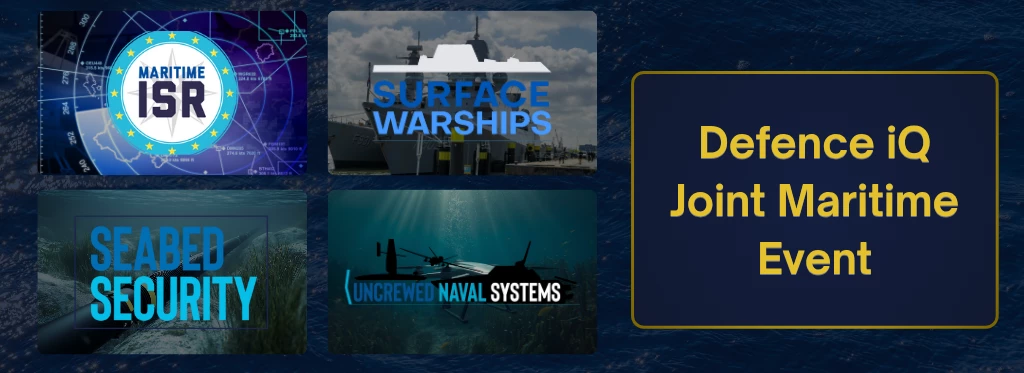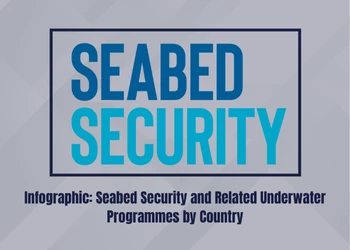NATO's future ISR capabilities and E-3 replacement [Interview]
Dr Çağatay Soyer, Alliance Future Surveillance & Control Project Manager, NATO Support and Procurement Agency spoke to Defence IQ about the future of ISR
Add bookmarkThe E-3 aircraft replacement
The Alliance Future Surveillance and Control (AFSC) Programme, NATO’s project to replace its E-3 aircraft fleet once it retires in 2035, is in full swing. Member nations are currently completing the first phase of the Concept Stage of the programme to refine outputs and select preferred concepts. Having recently hosted an Industry Day, it is clear partnerships with industry are key to developing a requirement for the future NATO capability.
E-3 aircraft. Source: Shutterstock
Defence IQ spoke with Dr Çağatay Soyer, Alliance Future Surveillance & Control Project Manager, NATO Support and Procurement Agency and speaker at the sixth Airborne ISR and C2 Battle Management conference.
Defence IQ: Could you talk about NSPA’s role in supporting NATO’s follow on to the AWACS programme, the Alliance Future Surveillance and Control (AFSC)?
RELATED: Transforming ISR capabilities through AI, Machine Learning and Big Data
Soyer: NSPA, in its acquisition and life cycle management role, is the NATO agency managing the execution of AFSC projects in the Concept Stage. As a Management Authority, we are responsible to ensure the successful coordination of work packages together with project stakeholders and our governance board to achieve required deliverables in scope, time, budget and quality throughout the Concept Stage to be concluded in proposed technical solutions. In early 2017, the Agency took this task on and established an AFSC Project Office to fulfil this task.
Defence IQ: As AFSC transitions into its Concept Stage, could you share some insights into the process of developing requirements and risk reduction?
Soyer: Yes, we are currently in the study phase of the Concept Stage, where we are working, based on the requirements defined by NATO Military Authorities, to conduct a number of studies on architectures and technical concepts.
In 2018, we worked with NATO Communications and Information Agency (NCIA) to capture the military requirements in an initial capability architecture. We will now use these products as inputs to a series of risk reduction and feasibility studies by industry in order to develop technical concepts and understand their feasibility for future AFSC solutions. Our aim is to reach a decision by the Nations on the preferred technical concept by the end of the Concept Stage.
RELATED: OCEAN 2020: Future of Europe's maritime ISR capabilities
Defence IQ: The new capability won’t be delivered until 2035. What are the challenges associated with conceptualising and designing a requirement that won’t be operational for so long? What are you doing to ensure that the capability will be relevant and effective for future environments?
Soyer: One driver for the AFSC realisation schedule is the planned retirement of the NATO AWACS fleet around 2035. While 2035 may look like a distant future, it really is not. The timelines associated with defining, contracting, developing and delivering a significant military capability are quite challenging.
This is why AFSC starts now, already with the development of technical concepts. The operational environment and threats in the future may be different from today. A number of new technologies may emerge and change our technical capabilities. The way our militaries work and operate may be significantly different from what we have today.
All of these considerations are driving several activities within the Concept Stage of AFSC. First of all, the AFSC Capability Requirements do reflect, as much as they can be predicted, future needs. These are built in a high-level architecture to guide the concept studies. At the same time, national and industry experts are involved, helping to define future technological challenges that should be addressed.
RELATED: Everything you need to know about the $5bn increase to US Intelligence budget
Additionally, an iterative approach to the development of AFSC capabilities is foreseen in order to allow adaptation and the AFSC architecture will be kept open to allow flexibility based on new knowledge and developments.
Defence IQ: Can you describe the role and importance of industry in the design and delivery of the new capability? What kinds of solution providers are you working with at this stage to support the programme?
Soyer: It is not possible to develop realistic and feasible concepts for a complex capability without the participation of industry, who will eventually develop and deliver these solutions. We have to bring industry perspectives into our analysis and decision making very early in the process and we have already started doing so.
We conducted two Industry Days at NSPA in 2018 to inform companies and answer their questions about the programme. These events were very successful and we intend to continue this interaction without jeopardising later competition, bidding and procurement processes and rules. Experts from industry were also involved in several working groups where we discussed and identified technological challenges for the future AFSC capability.
Additionally, NATO’s Industrial Advisory Group established a special sub-group for AFSC, providing industry advice to our programme governance body, as requested by the Nations. In the next phase of the project, in 2019, we start engaging industry more formally and competitively in our concept and feasibility studies. This will be a stepped approach, gradually building up the final AFSC technical concept over the next couple of years, with Nations’ involvement at key decision points.
RELATED: C4ISR Procurement opportunities in Kuwait
Defence IQ: Could you elaborate on some of the insights gained from the industry days?
Soyer: Industry Days were an opportunity for us to inform companies about the project and what’s coming next year in terms of studies that will be contracted to industry. So these were more focused on procurement than technical solutions. However, during our technical workshops organised in coordination with the nations, industry and national experts provided inputs on technological challenges and opportunities in certain areas. We are using these inputs, in addition to the capability requirements and architecture, to define the scope of our concept development studies starting next year.
Check out our Free report
Click here: Defence Trends 2020






















